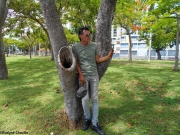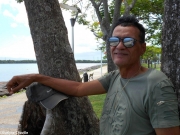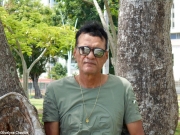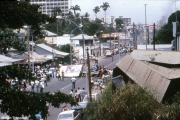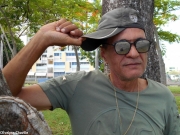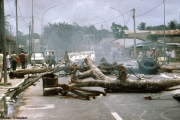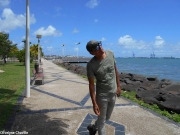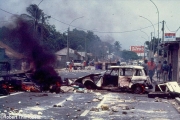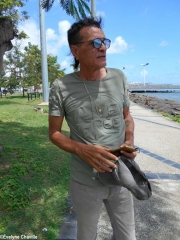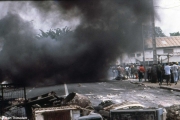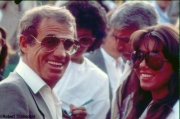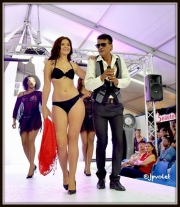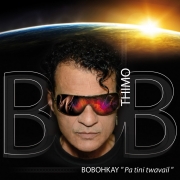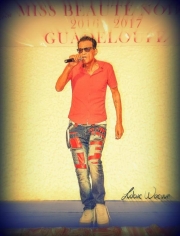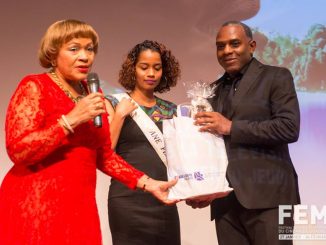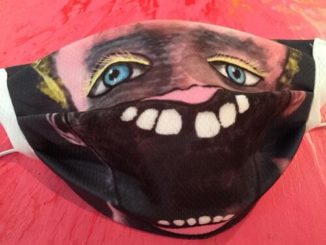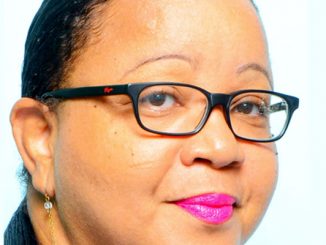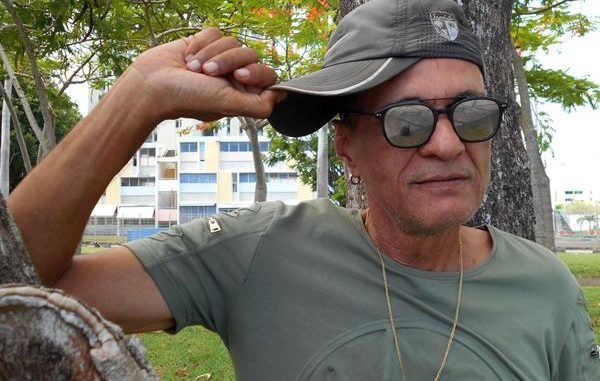
Over 50 years of age, Guadeloupean photographer Robert Thimodent looks like a young man. His professional activities, often in connection with artistic creation, are very numerous: photojournalist, art photographer, director of modeling agency, journalist, director, actor and singer.
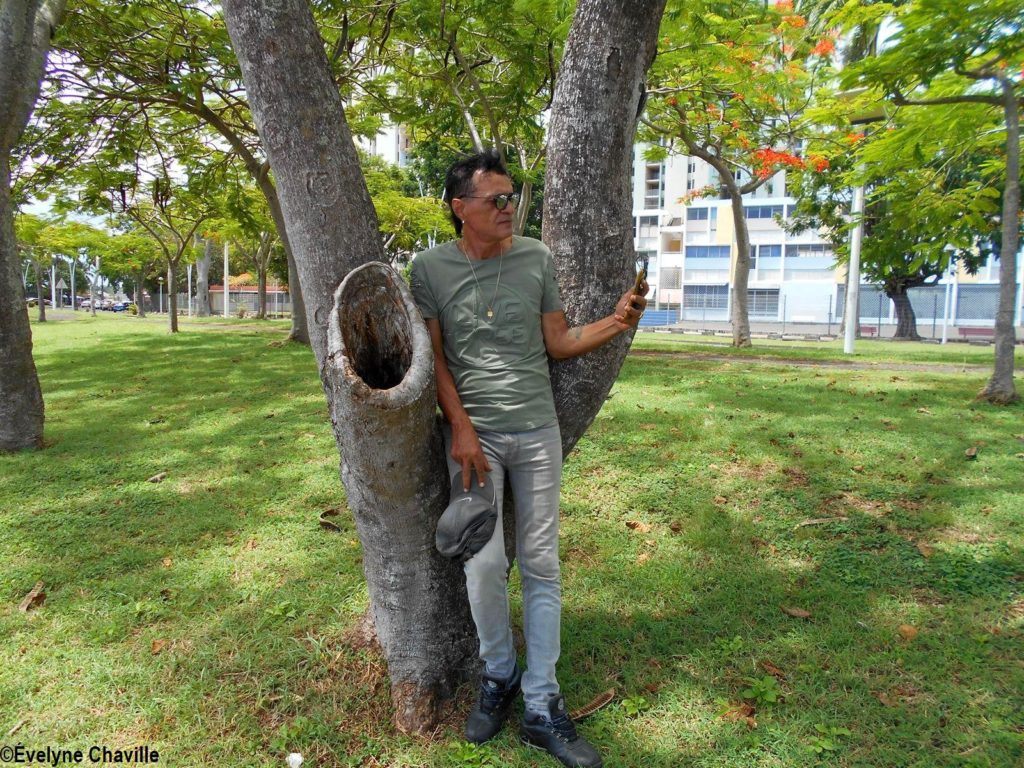
Robert Thimodent was 14 when he touched his first camera and it was love at first sight: “It was a Kodak. It was shaped like a cube and I started to take pictures of my friends. Then, I had a reflex and what makes different this camera is the image corresponds to what you see. At that time, it was considered a good camera”, he recalled. Robert will never part with a camera. “I had a brother-in-law who was a “specialist” in photography, he advised me when I wanted to buy a new camera. Of course, people who had a passion for photography shared information with each other. Like many people, I also went to St. Martin when I wanted to buy a good camera at a good price. I remember a Minolta with a led in the viewfinder that turned on when the exposure was correct and I was happy when OK was displayed. After, I had professional cameras”, he continued.
At that time, the young man who lived with his family at the Chemin des Petites Abymes in Pointe-à-Pitre knew all the photographers who were well-established in the city: “there were Catan, Lanoir and Lara, they were settled around the Place de la Victoire. There was also another photographer who sold a lot of photos but I do not know where his studio was, his name was Abel Denis”, he remembered. During his career (that is not over), Robert Thimodent owned all brands of cameras (Kodak, Minolta, Leica, Canon, Olympus, Nikon etc.). “I was an avant-gardist. I was expecting something that would eliminate the exhausting side of the photo. In fact, it happened with the advent of digital photography”, he said. He has just acquired a new compact camera…
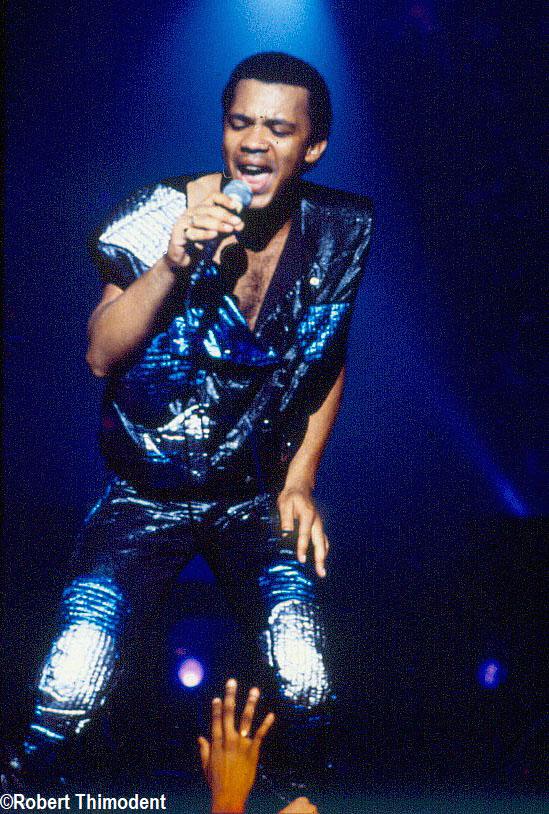
A desire to conquer the world
After his baccalaureate, he went to study in Paris. His father who was a bank employee, who later received the “Medal of Labor”, sent him to study economics at the University of Tolbiac. “I had a passion for economics, I read the major newspapers like “L’Express”, “Le Monde”. They talked about the construction of the European Community and I liked this idea, today I am rather disappointed by the result… I was already politically aware when I was at Baimbridge High School, there was a revolutionary side to me. So, I could not see myself spending all my life locked behind walls. I had a feeling of escape, I wanted to conquer the world, I dreamed of all kinds of things. Words like “globe-trotter”, “freelance” and “independent” sounded good”, he told.
The young student began to neglect his classes, he rather went to the photo laboratory in the hall of residence in Fontenay aux Roses where he lived. Over there, he discovered developing, he became aware of the importance of light, he found that the picture in black and white was more artistic etc. “I took many photos of weddings, shows by the dance troupe “La Brisquante” managed by Henri Luchel who represented the famous Madame Adeline in France”, he said. He also took photos of Kassav’ in the studio while the band was not yet famous all over the world. Sometimes, he acted as the musicians’ driver, he was also with them during their first concerts in the French capital, New York, Brooklyn, Réunion.
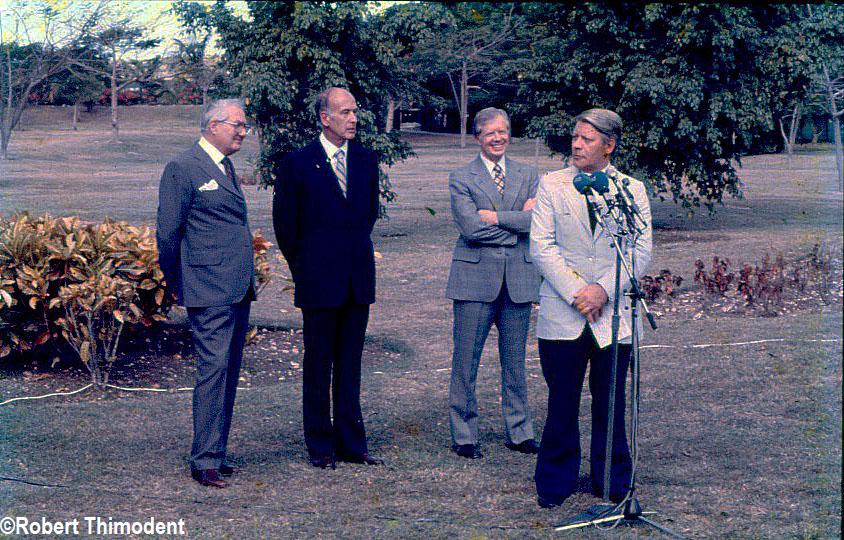
Photographing men in high places
1980 was a very busy year for the young men who was 25-year-old. He came back to Guadeloupe because his father was dying. In October of this year, he married his fiancée whom he met two years earlier. Shortly before his father’s death, he organized his first photography exhibition at the Centre Culturel Rémi Nainsouta in Pointe-à-Pitre which consists of portraits, sunsets, scenes of life in Guadeloupe and Martinique…
He decided to enroll at the University Antilles-Guyane in Fouillole but he only stayed four months in economics. “I found myself in front of a large void and I wondered what I was going to do now. That’s when I chose to become a professional photographer. I had read books on photography right, for example”, he said. He returned to live in France in 1981, in spite of everything he enrolled in the first year of Visual Arts at the University of La Sorbonne and even if he moved up to the second year, financial worries obliged him to drop out his studies definitively; it must be said that he was now the father of a little girl… He began to report on the news, he came and went between Europe and the West Indies. One day, he met the director of France-Antilles Guadeloupe who told him that he wanted to buy beautiful photos for his cultural column to “raise the level of the newspaper”. So, his pictures are published in the local daily paper.
However, in 1979, Robert Thimodent was already among the photojournalists from around the world to immortalize the meeting between the four great leaders – Valéry Giscard d’Estaing (France), Jimmy Carter (United States), Helmut Schmidt (FRG) and James Callaghan (Great Britain) – at the St. Marthe’s House in Saint-François to decide, among other subjects, the fate of the Shah of Iran… “It was for me a kind of maiden flight. It was Camille Jabbour, director of “Match” magazine who wrote me an official document to get the accreditation. There was a lot of crush, a camera hit my forehead and I was bleeding but it did not matter because I was “hunting” with the great photographers. I had a Nikon F, a professional camera that Mr. Jabbour’s son, Ruddy, had lent me(…)”, he told.
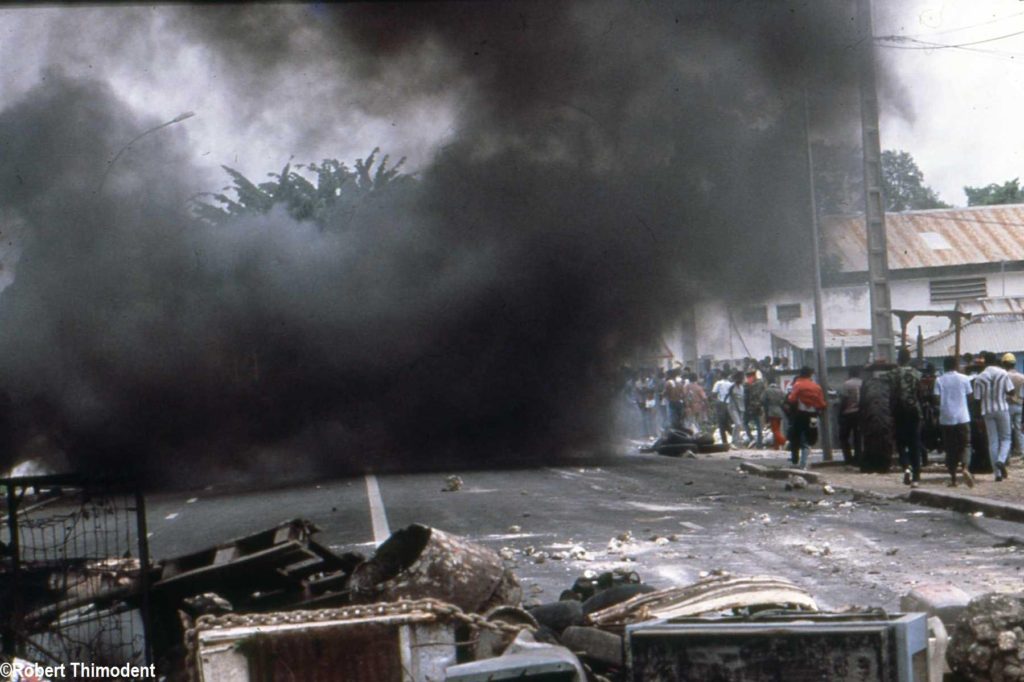
The photographer of the artists
This exceptional work experience gave more confidence to the young photographer. He wanted to join a photographic press agency and he went to “Sygma” in Paris to know if it was looking for a correspondent in Guadeloupe but he quickly understood that the Caribbean did not have much interest for these famous agencies and it was better to live in Europe to be appealed and sent to foreign countries.
From July 25 to 29, 1985, Guadeloupe was shaken and strike-bound by the “Faisant Affair”, Robert Thimodent had a ringside seat: “I was in my element, I had an assistant and we were on a motorcycle to cover the events that were taking place in particular in Vieux-Bourg and Fouillole in the Pointe-à-Pitre/Abymes area. A Sygma photographer was here, but he was with the police, I was ideally well placed because I was among the strikers and, this time, the agency took me more than one hundred photos that were sold in several European countries (Italy, Spain etc)”, he recalled. The photographer wanted to continue on in his may and went to Martinique for a report on the concert of French singer and actress, Vanessa Paradis, but the organizers replied that a photographer from Paris was already chosen…
In December 1985, he also followed French President François Mitterrand when he visited Guadeloupe and Martinique.
In the meantime, he joined the Union des Photographes Créateurs (UPC), Union of Creative Photographers. Until 2000, Robert Thimodent only worked in Guadeloupe, Martinique and France. He was also devoted to reports on artistic and cultural life. He took pictures of carnival parades, fashion shows and almost all the artists from the golden age of zouk, he was even the official photographer of some singers and musicians. “When I became a professional, every year, I went to Le Zénith in Paris to take photos of Kassav'”, he said. In addition, his photos are used to illustrate the cover of Patrick Saint-Éloi’s first album, two Georges Décimus’s albums, Éric Brouta’s and Jacob Desvarieux’s album… They are also published in France-Antilles and his supplement, TV Mag.

Many and varied activities
He fought for payment of his copyright. “I was the first photographer to broach this subject and some did not understand me… For me, it was important for a professional to make a living from his profession. If a photojournalist contents himself with selling his photos without receiving his royalties each time his photos are published, it is better to open a photo shop. Since they did not paid my royalties, I decided to create my newspaper”, he said. In 1999, he launched “Décollage“, a free A4-format magazine of about twenty pages with headings such as “fashion”, “cosmetics”, “people” etc. In Guadeloupe, he was the first to talk about DHEA, this molecule that rejuvenates; the famous Ary Ébroin published a column on West Indian mythology. “After 17 issues, the publication of the newspaper stopped in 2003. It was a good experience but it was very hard (…)”, he said.
Robert Thimodent’s professional career is really eclectic. “I’m like a computer with artistically loaded ports”, he said.
Indeed, he also devoted himself to art photography. After his first exhibition in 1980, the following year, he also showed his works at the Bibliothèque Schoelcher in Fort-de-France, Martinique. In 1989, on the occasion of the second edition of the Festival des Arts de la Guadeloupe (FESTAG), he exhibited his photographs at the Musée Schoelcher. In 1992, he participated in a collective exhibition at the Centre des Arts et de la Culture. Last July, the Festival International du Zouk de la Guadeloupe (FIZ) solicited him for an exhibition entitled “History of Zouk in pictures, a zoom on Gilles Floro” which took place at the Centre Culturel Rémi Nainsouta.
In 1995, he collaborated with the association “Les Cuisinières de la Guadeloupe” to publish the cookbook intitled “Traditions Culinaires Creoles” and translated into English.
In 2001 and for a year, the photographer managed “Plurielle”, a model agency created by Denis Mélyon.
Moreover, before the advent of the mobile phone equipped with a camera, he went every year to the Foire de Paris where he took photos of craftsmen, celebrities, visitors. “I worked a lot: after making my shots, I brought the films to the studio so they could be developed right away and I came back to the fair to sell the photos to the customers”, he recalled.
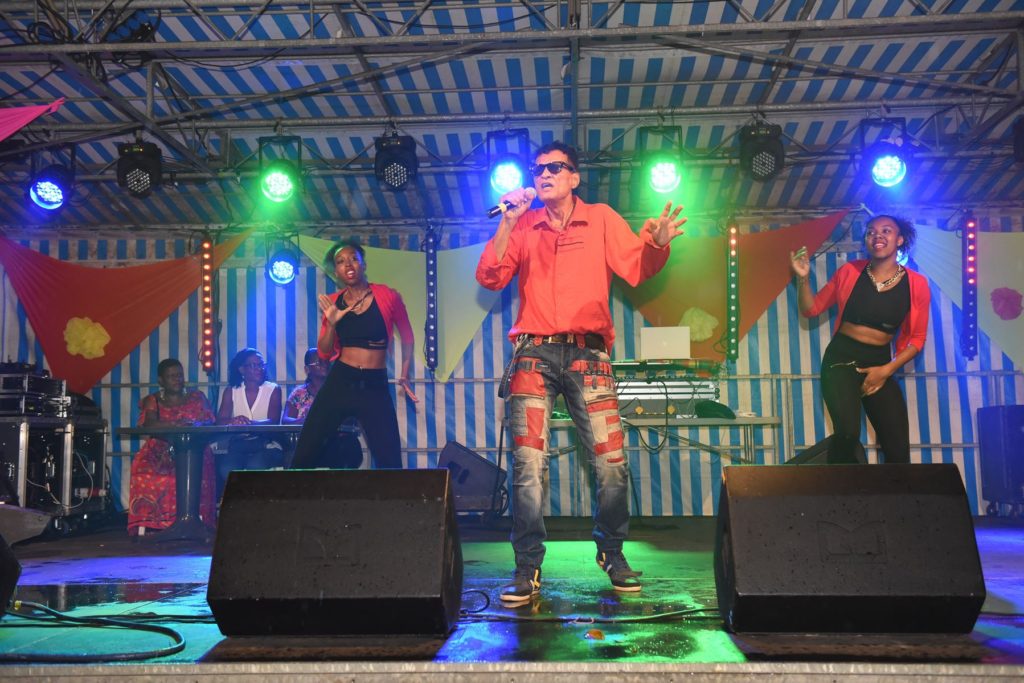
“Bobohkay”, an electro music album
Robert Thimodent also played golf and became the departmental golf champion in Guadeloupe in 1993 and 1997. He was the one who will write articles and take pictures for the local daily during golf competitions here and when the Guadeloupean delegation will travel in the Caribbean in particular in St. Kitts & Nevis, Cuba, Trinidad & Tobago and Barbados. At the golf club in Saint-François, he met celebrities like Mrs. Carven from the Paris fashion house and was invited to their table.
For about ten years, this image professional has been directing “T-Mode”, a fashion programme in Guadeloupe which is broadcast on the private television channel, Canal 10.
Three years ago, Robert Thimodent – who played percussion on barrels with his friends when he was 12, who bought a guitar at the age of 16 and listened to the music by the famous band “Les Vikings” – made one of his old dreams a reality: he released his first album entitled “Bobohkay”. His stage name is Bob Thimo. The 9 tracks are in Creole, French, English and Spanish and about unemployment, globalization, love, eroticism, among other things. The photographer-singer has already shot the video of three songs: “Pa tini travay”, “I remember”, and “Olivia de Bolivia”. The video of “Banana Party” is under preparation. “It’s electro music. It’s an album for the international market. I know people abroad listen to my album because of the royalties SACEM paid me”, said the artist. Now, he is looking for a music professional to help him promote his album that some local radios “boycott”: “they do not recognize me as a singer”, Robert said. On the cover of the record, Robert Thimodent encrusted the image of a flying saucer to testify to the appearance of a UFO on the hill of Saint-Félix in Le Gosier en 1980 while he was there, one night, with of a girl. “This thing that was on the sea near the island of Dominica arrived in a few seconds near us. I “freaked out” a lot and dreamed about it for a month. I think I have witnessed an extraordinary event (…)”, he said without any fear of being ridiculous…
His passion for the camera also encouraged him to become an actor in movies and soap operas.

